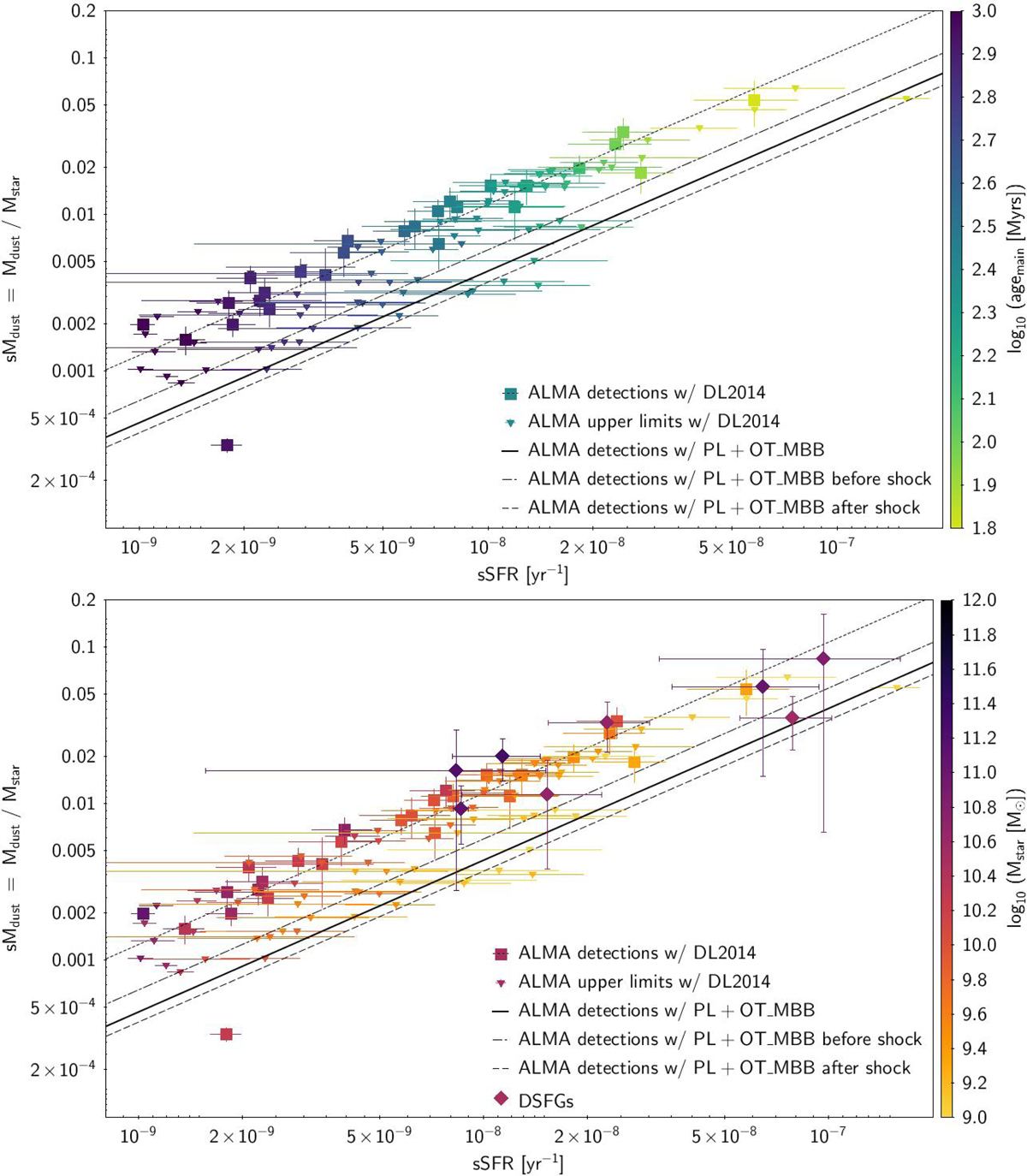Fig. 11.

Download original image
Comparison of observed DFRDs with models. Top: DFRDs color-coded with log10agemain. The individual symbols were computed assuming a PL+OT_MBB emission. We clearly observe an age sequence from right to left. The lines show the trend assuming different dust emissions and different values for κ0. The top one assumes DL2014 dust emission. The second one from the top was derived when using an optically thin modified blackbody with κ0 = 0.637 m2 kg−1 (PL+OT_MBB). We note that the factor 0.37 needed to match DL2014 to PL+OT_MBB emission was not applied. The third one from the top assumes optically thin modified blackbodies with κ0 corresponding to SNe dust mass absorption coefficients. It corresponds to the situation before the SNe reverse shock destruction, and the bottom line represents after the reverse shock destruction. Both from Hirashita et al. (2017). Bottom: same models as in as (a). The same objects plotted in (a) are color-coded in Mstar. A sample of DSFGs (Table 8), also color-coded in Mstar, was added to the plot with the code as follows: the upper triangle shows the maximum value, and the lower triangle shows the minimum value. These high redshift DSFGs are found on the same sequence as the other objects. However, these DSFGs have stellar masses larger than the underlying galaxy population that we study. It is important to note that the physical parameters (especially Mstar because the IR emission is dominant) of these high redshift DSFGs have very large uncertainties and their position location in the diagram can almost cover the entire plot. Better estimates of these parameters coming from JWST would help.
Current usage metrics show cumulative count of Article Views (full-text article views including HTML views, PDF and ePub downloads, according to the available data) and Abstracts Views on Vision4Press platform.
Data correspond to usage on the plateform after 2015. The current usage metrics is available 48-96 hours after online publication and is updated daily on week days.
Initial download of the metrics may take a while.


